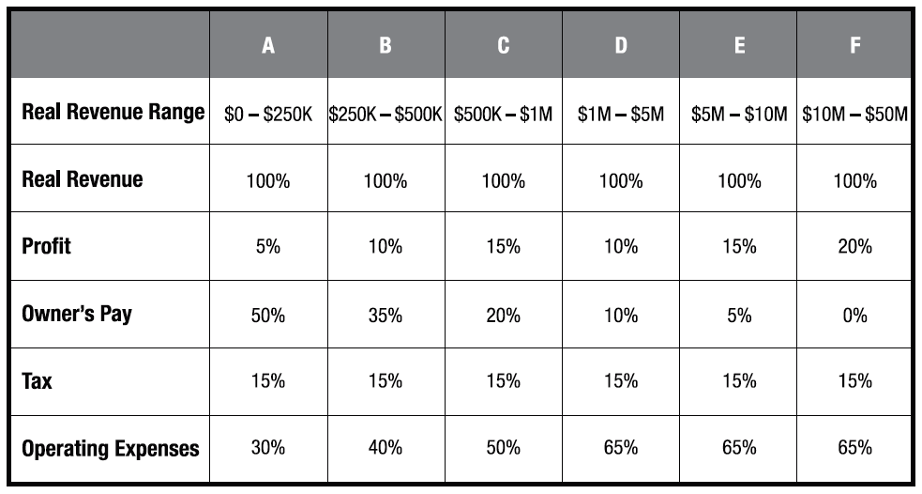Not that long ago, we experienced a significant shift in one of our businesses.
Not that long ago, we experienced a significant shift in one of our businesses. It went from consistently generating six-figure profits per month to burning through six figures every month.
How did this happen, you ask?
We decided we wanted to become the kind of company that commanded widespread recognition and respect – the next HubSpot or Tesla or insert whatever big company you’d like to own. The allure of unicorn status became our top priority. Naturally, we adopted the "grow or die" mindset, believing it was the only way forward.
Here’s what we learned. That path may appear sexy, but you only hear about the success stories in the growth game. You hear about the 1 out of 50 companies in the VC portfolio that achieve a big exit. The other 49 founders? Well, they can’t pull out of the cash nosedive and then hit the ground. They don’t make millions of dollars like you’re led to believe and instead are often left with nothing to show for their hard work.
On the other hand, your focus may not be solely on relentless growth at all costs. Perhaps you're building a lifestyle company and seeking to increase your company's profitability, but despite revenue growth, it feels like there's nothing left to squeeze out. The funds disappear into the abyss of expanding headcount, operating expenses, office space, and the never-ending list goes on.
There's always something clamoring for that extra cash – and this mindset is reinforced by the conventional accounting equation we've all followed for years: Revenue - Expenses = Profit.
Regardless of which trap you find yourself in, the likelihood that either will allow you to be wildly generous and achieve significant financial success is very low.
So, if your goal is to build something that blesses everyone involved, allowing you to pay your employees well, provide you and your family the life you desire, and most importantly in our opinion, give generously to your church and all the causes God has put on your heart, we’d like to recommend something different.
The Speiro Way works by prioritizing giving and profit before expenses. Sounds intuitive, and it is when you use a first principles approach. If you want your business to generate a profit to do with whatever you wish, why not pull that out of your revenue before you do anything else? This leaves you with whatever is left over for all expenses.
Revenue – Giving & Profit = Expenses.
The Speiro Way works by prioritizing giving and profit before expenses.
Now this accounting approach is not new or groundbreaking, in fact, this method of choosing a profit allocation first has been around for many years. But what we love most about it at Speiro is the way it allows you to prioritize giving, regardless of your financial standing. God’s “first fruits” command becomes completely achievable through your business. Oh, and generational wealth is created with this approach every day… so don’t write it off as a “slower” or “smaller” approach to growing a company. If we had continued to prioritize giving and profit in that business mentioned above, we would have likely pulled millions out each year and still been able to grow at a healthy pace.
In the following points, we'll delve into practical ways to break free from this profit-draining cycle and pave the path to sustainable success.
HOW TO IMPLEMENT THE SPEIRO WAY:
Our Speiro Way approach relies on a cascade mechanism, where all revenue first flows into one bank account, or for the sake of analogy (because everyone knows I like analogies) we’ll say flows into one “bucket”. Let’s name this bucket, our “income account”. After revenue hits the “income account”, we begin allocating portions of the total revenue into other accounts that are each specific to their own purpose. These accounts can be set up with the same bank you currently use to repurpose the checking account you already use. If there are issues getting these other accounts set up, we would recommend you find a new bank that is willing to work with you.
Quick Tip: This is not an unorthodox method for managing your business or even your personal finances. If you are met with opposition by your bank or accountant, you may just want to find another as there are plenty who will help. We typically use Chase at Speiro.
Let's introduce you to the six foundational accounts that serve as our arsenal of different ‘buckets’:
- INCOME: The bank account that welcomes all your revenue.
- PROFIT: Begin with a modest percentage goal and gradually ascend towards greater heights.
- GIVING: Commit to a percentage of your profit and move to this account for giving.
- OWNER'S COMP: A designated account to honor the hard work and compensate the visionary owner(s).
- TAX: Catering to your business's tax obligations, this account's specifics hinge on your profitability and location.
- OPEX: The remaining resources after the above allocations, are earmarked for operational expenses.
Ensure these accounts possess the capability to directly withdraw funds from the corresponding checking accounts.
Once your bank accounts are ready, it's time to take action on the implementation of the Speiro Way, which can be summed up in three simple steps.
1. Determine Your Allocation Percentages:
First, assess your Current Allocation Percentages, which simply means your existing expenditure across the foundational areas (Giving, Profit, Owners Comp, Tax, and Operating Expenses).
Next, compare these numbers against target allocation percentages derived from the benchmark of a 'healthy' business with similar revenue levels. Below, you'll find a table offering general targets based on diverse revenue thresholds. Please note that this table is only a broad guide.

2. Calculate Your Revenue for the Given Period
(within the INCOME account) and allocate it to the PROFIT, GIVING, OWNERS COMP, TAX, and OPEX accounts on a bi-monthly basis. Perhaps the 10th and 25th or whatever your payroll practices are.
The allocated amounts should align with your decided allocation percentages. This rhythmic bi-monthly flow facilitates an advantageous accounts payable schedule, enabling you to settle all bills from your OPEX account after the allocations are made.
3. Give the Total in Your Giving Account Once a Month
Pretty self-explanatory. Our favorite part of the month!
4. Quarter's End:
When the quarter comes to a close, an enticing reward awaits. Fifty percent of the PROFIT account's contents are bestowed upon the deserving owner(s). The remaining fifty percent ventures towards a long-term storage account, fortifying your capital reserves.
Congratulations! It really is that simple. Most behavior changes we want to make are not about ruthless discipline or adding another to-do item to our already busy schedules…the EASIEST way to implement a new behavior or squash an existing one is to change the environment so what you want to occur happens naturally.
By implementing the Speiro Way you create a culture of profitability and generosity. We could all use more automation in achieving our goals!
Recent Posts
Our Blog



